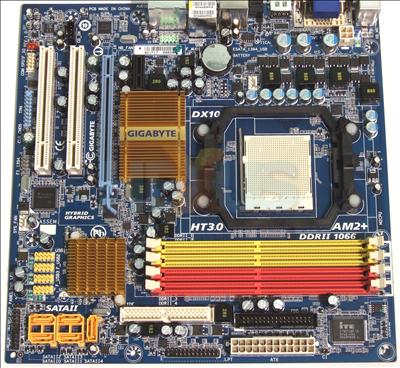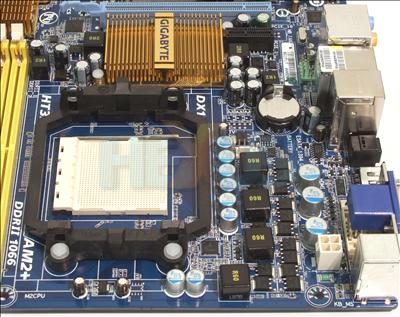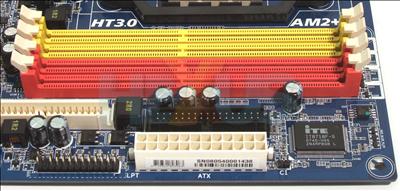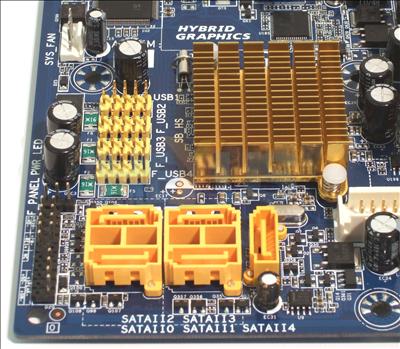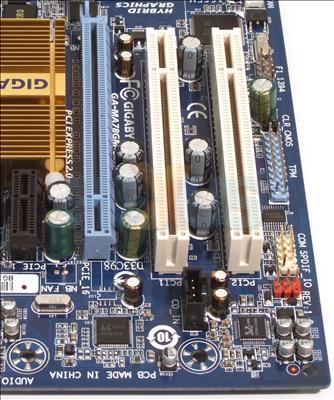Gigabyte layout
Gigabyte's mATX-sized board follows the general trend by cooling both bridges with passive heatsinks. Indeed, the only board we've seen with active cooling is the reference model, supplied by AMD.
Designing for a mATX board requires particular attention to component location, but, whilst undoubtedly busy, the Gigabyte's layout is clean in most respects.
The northbridge's heatsink sits flush with the PCIe x1 expansion slot but this shouldn't cause any airflow-related problems as x1 PCIe cards - be they graphics or RAID - rarely bulge far past the connector.
A reference CPU cooler fits on easily enough and access to the four-pin auxillary power connector is easy, too.
Four DIMM slots can accommodate DDR2-1066 memory, although whether it's actually supported depends upon the CPU you use.
The various component connectors are all grouped, sensibly, around the edge of the board, so no major problems here.
Five SATAII ports are grouped together, right by the SB700 southbridge. The remaining one is tasked for eSATA usage, remember.
Internal headers provide for an additional eight USB2.0 ports.
If you choose to ignore the possibility of leveraging integrated graphics for some Hybrid action - by not activating SurroundView and CrossFire in the BIOS and driver panel, respectively - the x16 PCIe gen2 slot functions like any other.
An ATI Radeon HD 3870 X2 will work just as well as an NVIDIA GeForce 8400 GS - the board doesn't tie you into a specific manufacturer or model, of course.
As per the reference chipset, one can output video from either DVI or HDMI concurrently with VGA, but not both digital outputs at once. For example, using the HDMI along with VGA would mean that DVI is deactivated by default.
A single eSATA port makes implicit sense, and four USB2.0 and a single FireWire400 port offer decent high-speed peripheral support from the I/O section.






